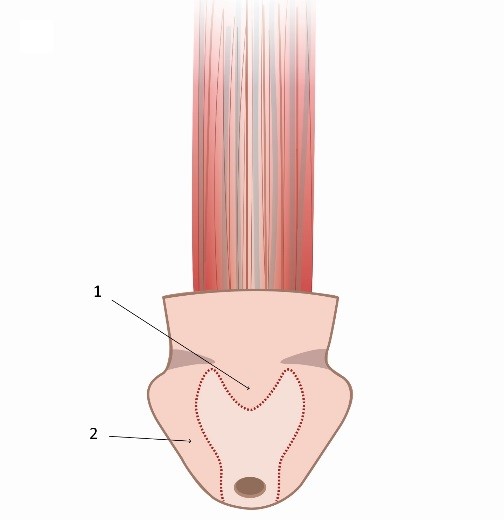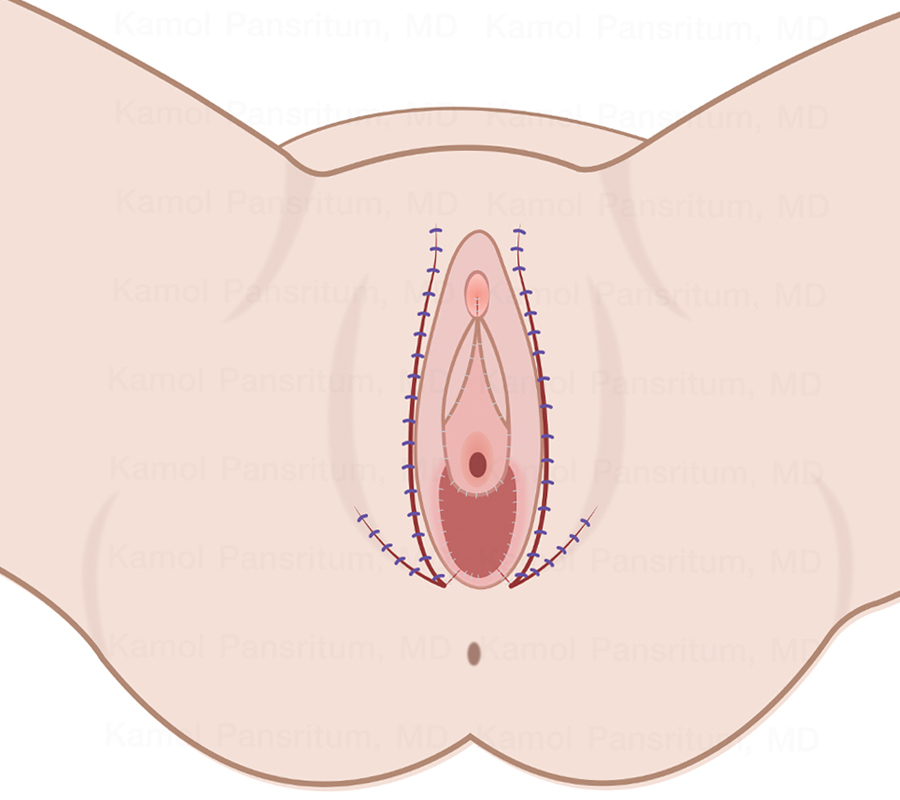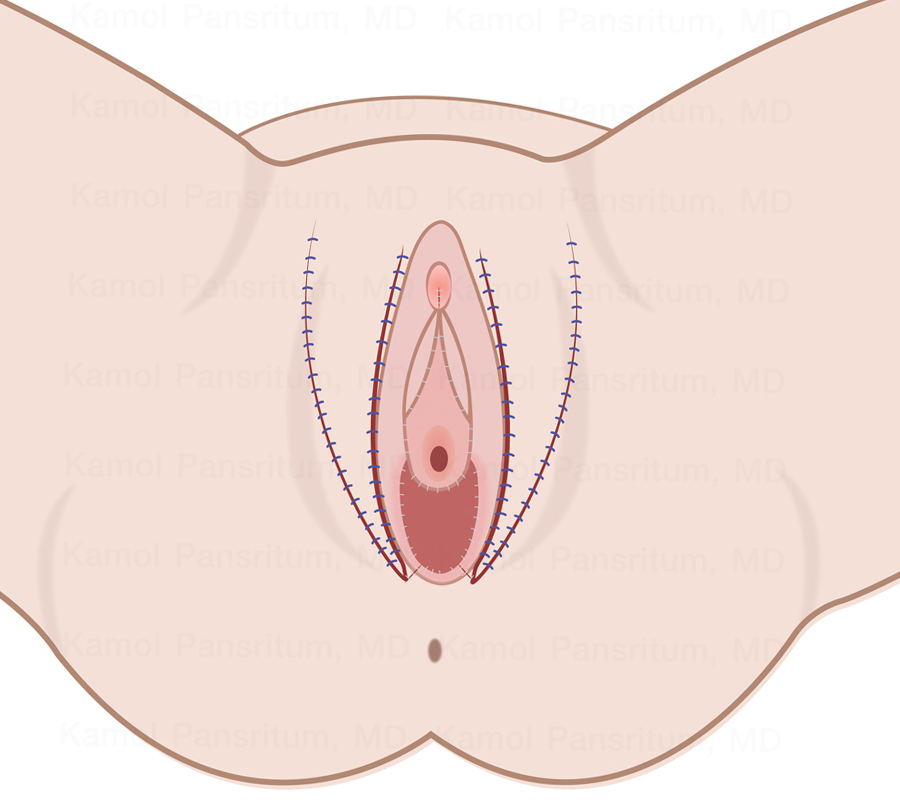According to Dr. Kamol Pansritum, MD, the nerve endings in the clitoris and the glans penis are similar, with approximately 8,000 nerve endings present in each. Dr. Kamol has developed a surgical technique that precisely identifies and preserves all the nerves from the glans penis, creating four points of special sexual arousal:
1 - The first point is the neoclitoris, which is the reconstructed clitoris for transgender women.
2 - The second area is located at the inner sides of the labia minora and contains additional nerve endings from the nerve trunk.
3 - The third point is the bilateral ridge of the neo urethral plate, which Dr. Kamol creates from the skirt of the glans penis and contains nerve endings.
4 - The fourth spot is located at the bulbourethral glands in front of the prostate glands, which Dr. Kamol always keeps intact to preserve the nerve endings and mucous secretion.
5 - The fifth spot is the G-spot, is at the lower part of the prostate glands and consists of sensory nerve endings.
Dr. Kamol creates the neo vagina very close to the surface of the prostate glands. Dr. Kamol also notes that some surgeons claim that their technique is the only one in the world that preserves the erotic nerve ending to the neo vagina, but this is not true. He provides a schematic of the glans penis and the areas that are moved to reconstruct the neo vagina in (Figure 1). In addition, he also claims that his technique results in minimal-short scar comparison to other conventional techniques, which is demonstrated in (Figure 2).
References
- https://teachmeanatomy.info/pelvis/the-male-reproductive-system/bulbourethral-glands/
- https://www.scielo.br/scielo.php?script=sci_arttext&pid=S0041-87812002000600008

Figure 1. The areas from the glans penis to the neo vagina, tip of glans penis to neo clitoris (1),
skirt of glans penis to the second spot sensation (2).

Figure 2. Dr. Kamol’s technique (Short-scar)

Figure 3. Other techniques (Long-scar)

